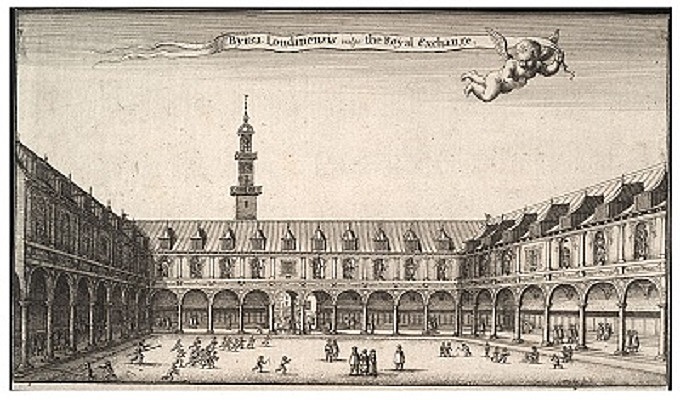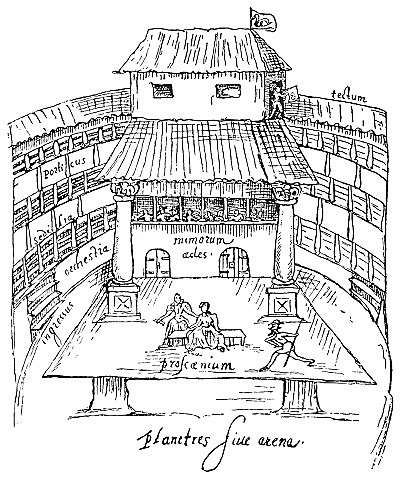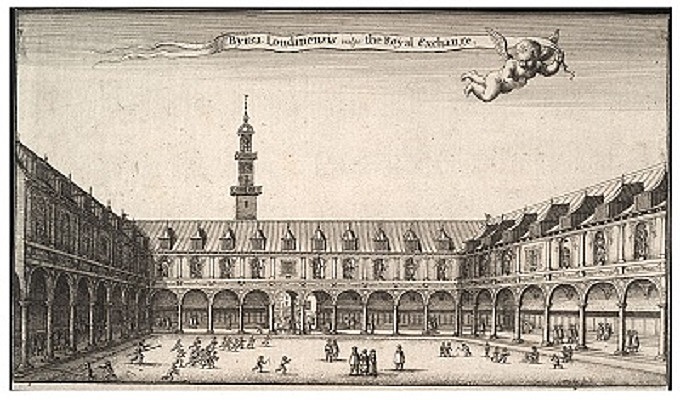Adam Smith and the Theater of the Marketplace
August 1, 2018


Adam Smith and the Theater of the Marketplace
It is something of a critical commonplace to note that Adam Smith’s The Theory of Moral Sentiments [TMS] relies on similes between the theater and the world to make its argument that we can learn to sympathize with others by becoming spectators of their experiences and imagining a similar spectator observing our own lives. Jonas Barish attends to Smith’s use of “the vocabulary of the theater as [TMS’s] basic idiom” as part of his study of the Anti-Theatrical Prejudice, and characterizes Smith’s generally benevolent view of theater as an outlier in the period. David Marshall’s Theater of Sympathy is less persuaded that Smith’s view of theater is benevolent, but is equally persuaded that TMS “represents a world that is structured and governed by theatrical relations.” And Charles Griswold’s extended discussion of Smith and theater in Adam Smith and the Virtues of Enlightenment notes, among other important observations, that “Smith was keenly interested in the theater throughout much of his career as a writer.” Indeed, Dugald Stewart’s Life of Adam Smith indicates that Smith had planned to write a study of the drama, though this was never completed. Records of Smith’s library indicate that he owned copies of many plays, and references to drama well outstrip references to any other form of literature in his works.
Smith’s figure of the “spectator,” constantly viewing and assessing others while being viewed and assessed in his turn, is eminently theatrical. Observed by others, he is an actor. Observing others, he is the audience and the critic. His position, as he moves through the world, is much like that of the 17th century diarist and play-goer Samuel Pepys when he attends the theater one day in March of 1668:
It is something of a critical commonplace to note that Adam Smith’s The Theory of Moral Sentiments [TMS] relies on similes between the theater and the world to make its argument that we can learn to sympathize with others by becoming spectators of their experiences and imagining a similar spectator observing our own lives. Jonas Barish attends to Smith’s use of “the vocabulary of the theater as [TMS’s] basic idiom” as part of his study of the Anti-Theatrical Prejudice, and characterizes Smith’s generally benevolent view of theater as an outlier in the period. David Marshall’s Theater of Sympathy is less persuaded that Smith’s view of theater is benevolent, but is equally persuaded that TMS “represents a world that is structured and governed by theatrical relations.” And Charles Griswold’s extended discussion of Smith and theater in Adam Smith and the Virtues of Enlightenment notes, among other important observations, that “Smith was keenly interested in the theater throughout much of his career as a writer.” Indeed, Dugald Stewart’s Life of Adam Smith indicates that Smith had planned to write a study of the drama, though this was never completed. Records of Smith’s library indicate that he owned copies of many plays, and references to drama well outstrip references to any other form of literature in his works.
Smith’s figure of the “spectator,” constantly viewing and assessing others while being viewed and assessed in his turn, is eminently theatrical. Observed by others, he is an actor. Observing others, he is the audience and the critic. His position, as he moves through the world, is much like that of the 17th century diarist and play-goer Samuel Pepys when he attends the theater one day in March of 1668:
I [went] alone to the Duke of York’s house, to see the new play, called “The Man is the Master,” where the house was, it being not above one o’clock, very full. But my wife and Deb. being there before, with Mrs. Pierce and Corbet and Betty Turner, whom my wife carried with her, they made me room; and there I sat, it costing me 8s. upon them in oranges, at 6d. a-piece. By and by the King come; and we sat just under him, so that I durst not turn my back all the play.
Pepys goes to the playhouse to see The Man is the Master, but the presence of the King turns Pepys into a spectator not just of the play, but of the monarch. And the King’s presence, in turn, makes Pepys hyper-aware of his own observable behavior as he worries that the King might see him and take negative notice if he turns his back on the play. Given that the King sets the standard for what is praise-worthy in Pepys’s world, he is deeply concerned about the possibility that his opinion of a play might appear not to align with the King’s opinion.
Smith imagines just such an occurrence in TMS when he discusses the experience of viewing a work of art with another person.
He who admires the same poem or the same picture, and admires them exactly as I do, must surely allow the justness of my admiration. He who laughs at the same joke, and laughs along with me, cannot well deny the propriety of my laughter. On the contrary, the person who, upon these different occasions, either feels no such emotion as that which I feel, or feels none that bears any proportion to mine, cannot avoid disapproving my sentiments, on account of their dissonance with his own. … if I laugh loud and heartily when he only smiles, or, on the contrary, only smile when he laughs loud and heartily; …I must incur a greater or less degree of his disapprobation: and, upon all occasions, his own sentiments are the standards and measures by which he judges of mine.
Such concerns become a way not merely of developing cultural tastes, but a way of modeling and practicing good behavior as well—what Smith would call “self-command.” A less self-aware audience member might well have turned his back rudely on the King and on the play the King was watching. Pepys’s sense of being both spectator and spectacle helps him behave properly in the theater and in the world at large.
Smith’s book about developing our sympathies by thinking of the world as a kind of theater makes an interesting pair with his other, equally famous book, about thinking of the world in terms of a market where we “truck, barter, and exchange” with one another. In the 19th century, Smith scholars were troubled by what they saw as a lack of connection between those two approaches. Much work has been done since then to argue against that apparent disjunction, to point out the many connections between the “two Adam Smiths,” and to insist on that Smith’s works are coherent with one another and connected to one another.
Smith’s focus on the theater, I think, helps to support scholars who see those connections.
17th and 18th century English writers were fascinated by markets, and they frequently represented them in their work as a kind of theater. The market, fair, or “exchange” was something that one attended in order to observe, not just to shop. Joseph Addison and Richard Steele’s daily periodical The Spectator provides a classic example from 1711, decades prior to Smith’s publications. Here, Addison and Steele write,
There is no Place in the Town which I so much love to frequent as the Royal-Exchange. It gives me a secret Satisfaction, and in some measure, gratifies my Vanity, as I am an Englishman, to see so rich an Assembly of Countrymen and Foreigners consulting together upon the private Business of Mankind, and making this Metropolis a kind of Emporium for the whole Earth have often been pleased to hear Disputes adjusted between an Inhabitant of Japan and an Alderman of London, or to see a Subject of the Great Mogul entering into a League with one of the Czar of Muscovy. I am infinitely delighted in mixing with these several Ministers of Commerce, as they are distinguished by their different Walks and different Languages…
Addison and Steele’s spectator doesn’t seem to go to the Royal-Exchange to buy anything, trade anything, or invest in anything. Instead, he goes to the Royal-Exchange to watch everything. The market is a show with a rich assembly of exotic characters to look at, enticing dialogue to overhear, and a range of different customs to learn.
It’s no surprise that Addison and Steele saw the Royal-Exchange as theatrical. The playwright Thomas Heywood found it sufficiently dramatic that he devoted an entire play to it. If You Know Not Me, You Know Nobody, Part II (published 1606) tells the story of the founding and construction of the Royal-Exchange. In Heywood’s version of the story, Sir Thomas Gresham gets caught in the rain. Aggravated that there is no covered building in which he may meet colleagues to do business, he decides to build one for the good of the city of London. The plan of the building, as described in the play, is much like the plan for an early modern theater, with a square covered area surrounding an unroofed center. (See Figs. 1 and 2) Gresham’s description of the building’s use heightens this similarity:
…when our courtiers
Shall come in trains to pace old Gresham’s Burse
They shall have such a girdle of chaste eyes,
And such a globe of beauty round about
Ladies shall blush to turn their visors off,
And courtiers swear they ly’d when they did scoff.
Courtiers who come to view the Royal Exchange will be, like actors in a play, observed by the “chaste eyes” of those who surround the stage on which they walk. But like Smith’s spectator, the courtiers will be affected in turn by those who watch them. Noble ladies will blush to see their beauty outshone by the chaste beauty of the merchants’ wives, and courtiers will have to retract any criticisms they have made of the merchant class. The market is like the theater which is like the world. We observe others, and they observe us. Thus, we learn.
The learning that takes place in such moments is learning that enables trade. The economist Bart Wilson has argued that a crucial foundation for understanding property rights, and thus the ability to trade that emerges from property rights, is the ability to imagine not only oneself and one’s property as a kind of extension of oneself, but also the self and property of others. Wilson’s work connects this back to the earliest humans. Adam Smith sees it operating daily in the world of markets around him.
Whoever offers to another a bargain of any kind proposes to do this. Give me that which I want, and you shall have this which you want, is the meaning of every such offer; and it is in this manner that we obtain from one another the far greater part of those good offices which we stand in need of.
Our ability to trade, in other words, rests upon our ability to imagine the needs and desires of other people. Our ability to imagine the needs and desires of others rests upon our ability to imagine their lives and their situations.
[E]very prudent man in every period of society, after the first establishment of the division of labour, must naturally have endeavoured to manage his affairs in such a manner, as to have at all times by him, besides the peculiar produce of his own industry, a certain quantity of some one commodity or other, such as he imagined few people would be likely to refuse in exchange for the produce of their industry.
We learn that kind of sympathetic imagining by practicing sympathy as spectators of the world and as spectators of the theater.
The theatrical imagery in TMS is, then, no accident. It is not even a set of images limited to Smith in his philosophic and ethical mode. It is a governing image for how Smith understands the way that humans function in all parts of the world, including—perhaps most importantly—how they function in the market.


References
Jonas A. Barish, The Anti-Theatrical Prejudice. Berkeley: University of California Press, 1985
David Marshall, Theater of Sympathy: Shaftesbury, Defoe, Adam Smith, and George Eliot. New York; Columbia University Press, 1986.
Charles Griswold. Adam Smith and the Virtues of Enlightenment. Cambridge: Cambridge University Press, 1999.
Thomas Heywood. If You Know Not Me, You Know Nobody, Part II. (1606) Oxford, Benediction Classics, 2008.
Wilson, Bart J., “The Meaning of Property in Things” (August 7, 2017). [Working paper]